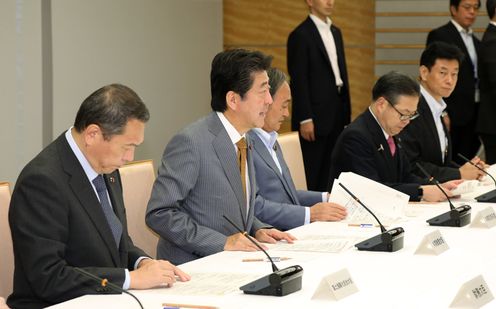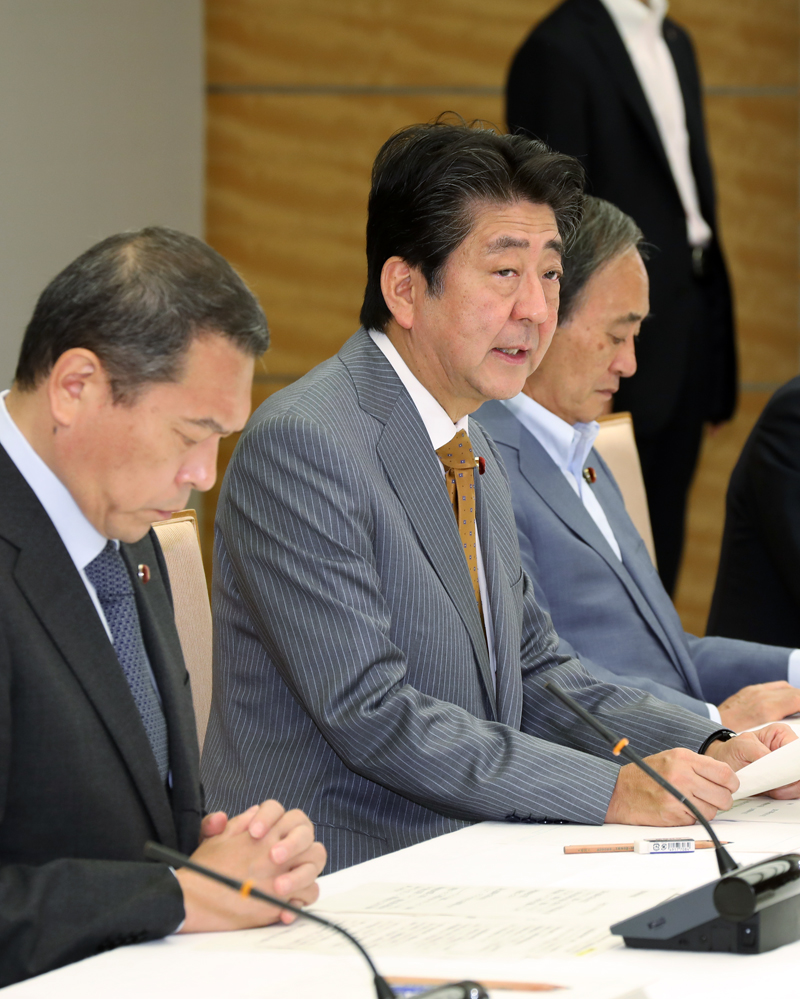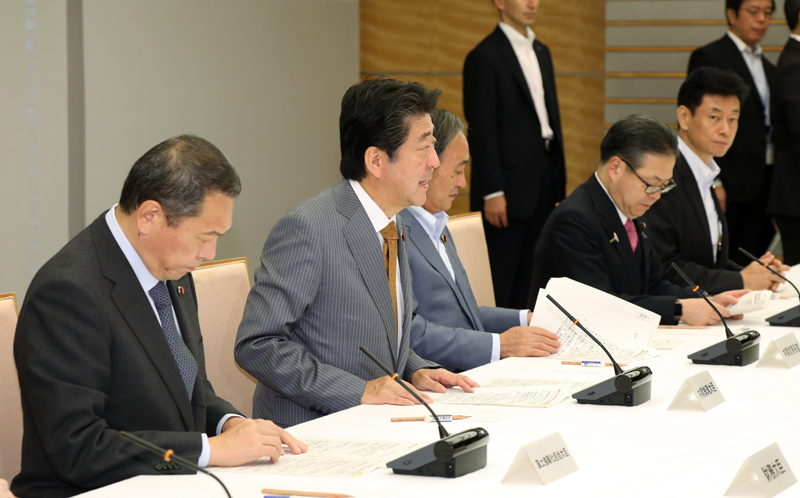Home > News > The Prime Minister in Action > September 2018 > Ministerial Council on Emergency Inspection of Critical Infrastructure
The Prime Minister in Action
Ministerial Council on Emergency Inspection of Critical Infrastructure
September 21, 2018

Photograph of the Prime Minister delivering an address

Photograph of the Prime Minister delivering an address
[Provisional Translation]
On September 21, 2018, Prime Minister Shinzo Abe held a meeting of the Ministerial Council on Emergency Inspection of Critical Infrastructure at the Prime Minister’s Office.
The Prime Minister said in his opening address,
“I would like to express my heartfelt condolences for all the people who have lost their lives as a result of the Hokkaido Eastern Iburi Earthquake, Typhoon No. 21, the heavy rains in western Japan and other disasters. I would also like to extend my deepest sympathies to all who have been affected by these disasters.
Recovery from these disasters is steadily underway in the respective areas, thanks to the efforts of all the relevant parties, such as the lifting of the power conservation target in Hokkaido, the reopening of the entire passenger terminals of the Kansai International Airport, and the enhancement of safety in the areas affected by the heavy rains in western Japan through the dredging and removal of trees and other debris from rivers.
Furthermore, we will designate public civil engineering facilities, with no areal limitations, with respect to the Hokkaido Eastern Iburi Earthquake, and nine municipalities in Wakayama, Nara, Osaka, Nagano, and Niigata, affected by Typhoons No. 19,* No. 20,** and No. 21,*** as “Disaster of Extreme Severity.” We will accelerate the arrangements towards Cabinet approval at the earliest possible date.
This recent series of natural disasters has also highlighted certain issues. We will conduct emergency inspections nationwide and compile response measures by the end of November to ensure that critical infrastructure that support our lives, such as electricity and airports, maintain their functions in case of any forms of disasters.
I ask all ministers to work together and take all possible measures to strengthen the resilience of our critical infrastructure, under the leadership of Minister in charge of Building National Resilience Hachiro Okonogi. At the same time, weather conditions have been showing dramatic changes in recent years, as seen by extensive torrential rains. To respond to such changes, we will put in place intensive emergency measures in disaster prevention, disaster mitigation, and national resilience over the coming three years, so as to build a resilient Japan where people feel safe.”
*Typhoon Soulik
**Typhoon Cimaron
***Typhoon Jebi


